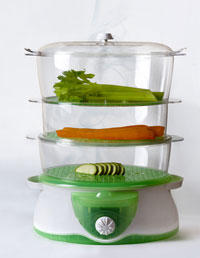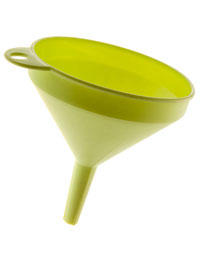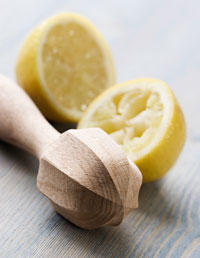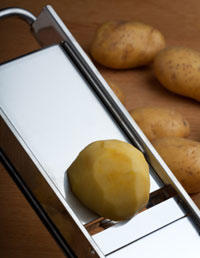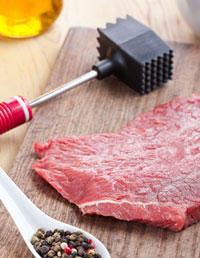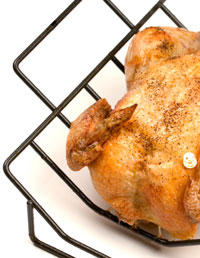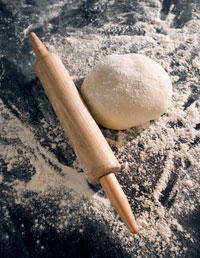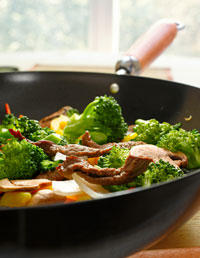Five healthy foods to eat at your workstation
We've all heard it times and again that sitting all day long at the desk isn't really good for the health. Sadly, there aren't any feasible alternatives to this mode of working.
While you can't just leave your job, you can surely do something which is beneficial for your health. Eating the right kind of fruits can help you overcome the negative effects of sitting like a robot all day.
Here are five power foods you can enjoy while sitting at your desk. They can work wonders for your heart, blood pressure, and can even improve your memory and concentration.
Walnuts
Some new researches have pointed out that walnuts have more (and better quality) antioxidants than almonds, peanuts, pistachios and many other nuts. All nuts have been found to improve lipids and can reduce the risk of heart diseases. Walnuts have also been found to enhance cognitive and motor function in animals with Alzheimer's. Experts recommend seven walnuts a day.
Cup of Green Tea
Polyphenols, one of the major ingredients of green tea, is known to help repair the damaged DNA and stimulate the immune system. Besides, research shows that green tea also helps in reducing the risk of cancers, including skin cancer and prostate cancer.
Popcorn
If there ever was a list of healthy snacks, this is definitely going to be on the list. In fact, many say that popcorn is the healthiest snack available. It is 100 percent whole grain and is big on fiber and antioxidants. If you can air-pop your popcorn and add a minimal quantity of salt, you'd have the best popcorn, say experts. If your office has a microwave, just make sure you bring a pack of low sodium popcorn to work.
Dark Chocolate
This, too, contains those powerful antioxidants called Polyphenols which combat the risk factors (like oxidation of LDL cholesterol) for heart diseases and also inhibit clotting. Studies have also indicated that consuming a small bar of dark chocolate daily can reduce blood pressure in people with mild hypertension. Caffeine, another active ingredient of dark chocolate, can give you that much-required kick and a boost in concentration levels.
Fruits
Not only they help you conquer that “false hunger”, they are also brimming with nutrients which are needed to keep you going all day. You can choose between apples, bananas, mangoes, oranges, papayas etc. but make sure you carry some fruits to the office on a daily basis
Medical News, Medical Information, Help patients, Disease Information, Drug Information
Thursday, September 15, 2011
Saturday, September 10, 2011
11 Kitchen Tools You Don't Really Need
Save money (and cabinet space!) by discovering new uses for your old kitchenstandbys.
These days, it seems like every recipe requires its own special pot, pan or gadget. But do you really need a panini press, mandoline or other expensive gadget just to try out a new dish? Not only does it make you hesitant to experiment in the kitchen, it can also get pretty costly. Tired of shelling out on kitchen equipment—however handy it may be—we turned to Kate Merker, food & nutrition director for Woman's Day, and Cynthia B. Keller, a chef instructor at Culinary Institute of America, for advice on how to use what you already have in your cabinets to achieve what one of these specialty cooking tools can do. The results: A win-win for your pocket book and dinner table. Electric GriddleGriddles are great for pancakes and fried eggs because they have a big, flat surface to cook on. However, their size (which ranges from 20"x10" to 23"x17") make them a beast when it comes to counter space and storage. But a cast iron skillet with a flat bottom will do the trick since it doesn’t warp when you put it on the stove, and you’ll get a relatively even heat conduction, according to Keller. Plus, she adds, “If well-conditioned, they become naturally non-stick.” In a pinch, a sauté pan would also work, she says, but they are prone to getting a hump in the middle, which will cause uneven shapes and heating. |
Electric SteamerA steamer is a terrific way to cook vegetables without adding fat, but there’s no need to add one to your already-crammed cupboard. Instead, simply place a wire mesh strainer or metal colander directly inside your cooking pot filled with water. If your lid won't fit after placing either inside, place a piece of aluminum foil over the top and seal it around the pot. Note: Be sure the strainer or colander is heat-safe or made with stainless steel (it should be clearly labeled). If you’re not sure what the material is, you should avoid using a strainer or colander for this type of preparation because it may contain lead solder, which can leech into your food. |
FunnelIt only takes one mess to learn that, if a recipe calls for a funnel, you should use it. The trouble is, you never know exactly what size you’ll need and storing larger diameter funnels is a pain. Fortunately, it’s a breeze to construct a makeshift one. For wet ingredients, trim off the bottom section of an empty plastic soda bottle (about 3 inches down from where the neck slopes) and turn it upside down. This will work for practically anything except when you’re home canning jellies or jams, as the high temperature can cause the plastic to warm and become misshapen. For dry ingredients, create a simple cone shape from parchment orwax paper, holding it in place or taping the sides. |
Juice ReamerWhen a recipe calls for fresh-squeezed juice, forget a reamer or handheld juicer—simply use a large pair of tongs (about 6- to 8-in long). Place a halved citrus fruit into the V-shape near the hinge along the top of the tongs and squeeze the handles together. |
MandolineA mandoline will give you precision when slicing fruits and vegetables—but it’s expensive and can be dangerous if you don’t know how to handle it properly. Instead, use avegetable peeler. It may not be as quick or uniform in slicing, but you can still achieve paper-thin slices and long curls of vegetables or fruit peels. For maximum efficacy and control, find one with a handle that comfortably fits your hand, and (carefully) slice towards the body. |
Meat MalletIf you like chicken rollups and veal scaloppini, a mallet is a must—but instead of keeping this Medieval-looking device around just to occasionally pound out some meat, go for asmall sauté pan instead. Sandwich the meat between two layers of plastic cling wrap and have at it with your makeshift mallet. Keller likes to use an 8- or 9-in pan, because it has “a nice, broad flat surface and hits the meat evenly.” You could also use the sides of a heavy can wrapped in plastic, but a sauté pan will be easier to handle. |
Panini PressA sauté pan won’t give you those signature grill lines, but it will provide all the toasty, gooey sandwiches you can handle—without spending $40+ on a bulky, one-use gadget. Start with a sauté pan that's clean and not made of copper (which oxidizes). Put your panini in it and place aheavy cast iron skillet on top in order to press the sandwich down; flip your sandwich over once the bread is toasted. If you don't have a cast iron skillet, place a sauté pan on top, weighing it down with three or four large cans (around 28 oz) of soup or vegetables. Another option is to place an aluminum foil-covered brick on top of the panini in lieu of another pan. |
Pastry BagUnless you’re piping an intricate design or delicate embellishments, skip the pastry bag (which is a bear to clean) and opt for a zip-top plastic bag that you can toss when done. Small sandwich bags break easily, so it’s best to use a gallon-size, heavy-duty freezer-safe bag. Like you would a pastry bag, add the frosting or filling (about halfway up or less), press it down gently into one bottom corner and twist the leftover bag at top to close it off. Snip the corner off as desired (the higher up you cut, the bigger the line will be) and pipe away. |
Roasting RackGreat as it may be for cooking fowl, the roasting rack doesn’t get much play beyond Thanksgiving. Skip the hassle (and cost) by creating a small ring or S-shape “snake” out of rolled foil that’s about 1/2-in thick. Place it in an aluminum roaster pan and then set your bird on top of it. For an even easier option, layer chopped onions, carrots and celery on the bottom of a pan, about 1/2- to 1-in deep, and set your bird on top. It’s just enough room to let the air circulate—with the added benefit of roasted vegetables for later. |
Rolling PinUnlike some other items on the list, a rolling pin isn’t usually pricey. But it does take up space and, unless you love to bake, it’s seldom used. In its place, wrap a wine bottle (full or empty) with plastic cling wrap and work away as you would with a pin. The wrap will keep it from sticking and prevents a full-bottle from getting messy. If you’re working with dough for pie or shortbread cookies, ensure it stays cool by using a full bottle that’s been chilling in the fridge for a bit. |
WokA wok retains heat well and provides a lot of surface area for quick-cooking meats and veggies. However, its 14" diameter makes storage a challenge while the bowl shape limits its usage. A large sauté pan works just as well for stir-fries and can be used for many other types of dishes. Keller advises picking up one that has a clad bottom and good weight to it, which will “hold the heat nice and high, and disperse it evenly.” Avoid lightweight, non-stick pans, which won’t conduct heat well enough. |
Monday, September 5, 2011
Would You Know Skin Cancer If You Saw It?
Would You Know Skin Cancer If You Saw It?

Would You Know Skin Cancer If You Saw It?
Skin cancer is sneaky, and not because it doesn't give fair warning. An early -- and curable -- cancer can usually be spotted, but often you never see it (it's hiding on the back of your upper thigh), or you dismiss it as just another freckle. Sure, you've heard the "changing color, ragged edges" litany many times, but do you know exactly what that looks like on your own skin?
Time for some show-and-tell. Now -- when you're still wearing your shorts and flip-flops and showing more skin than usual -- is the perfect time to see whether you can spot skin cancer.
Time for some show-and-tell. Now -- when you're still wearing your shorts and flip-flops and showing more skin than usual -- is the perfect time to see whether you can spot skin cancer.
Get more health tips from RealAge:
- Take the RealAge Test, and get a personalized road map for looking and feeling younger.
- Suspect you have ADHD? Find out how your symptoms affect your friends and family.
- Find out when you should never give kids medicine.
- Give yourself a smile check. Take this tour of your mouth.
- Allergies, or a cold? Take this Allergy test and find out.
Friday, July 29, 2011
Reading body language to help navigate difficult patient interactions
Reading body language to help navigate difficult patient interactions
When working with a patient population with chronic and terminal illnesses, very often, stressful and difficult conversations take place frequently. Often the news is not good or not what the person wants to hear. Having the assessment skills and knowledge about how to read body language and react accordingly to manage the interaction in a positive way are important skills to have.
Here are 5 tips that can help you navigate difficult patient interactions.
Tip 1. When someone raises their eyebrow, this is a sign that they are not feeling threatened. When you raise your eyebrow, it often elicits a smile from the person your are interacting with, so the next time you receive an eyebrow raise, know you have a good rapport with this person and they are comfortable with you. Why not try to foster a positive response from your patient by raising your eyebrows next time you talk to them? Maybe you will notice that they warm up to you easily.
Tip 2. A person’s eyes dilate strongly when they are stimulated by the conversation and are in a problem solving mode. You may use this to your advantage when you are discussing goals of care and the course of treatment. Paying attention to whether patients and family members have dilated pupils can give you a clue as to whether it is the right time to address important planning issues. When the pupils are dilated, chances are that decisions made will be positive ones.
Tip 3. The first person to look away in an introduction is the more submissive. This can be helpful to understand family dynamics, who the decision makers are, and who is most likely to be leading the family discussions. It can be helpful to determine the hierarchy within a family and whether the people you are dealing with are in a dominant role. They may wish to dominate you in the relationship, which may make the relationship difficult and may be something that you must pay attention to.
Tip 4. If a person’s eyes are moving around and darting from one object to another, they are either nervous or bored. The type of interaction you are having with them will tell you which is true. If you have engaged them in conversation for an extended period of time, you can make an assumption that the conversation is now boring for them. If the conversation is about a difficult subject matter, chances are, they are nervous. You might want to try to reassure them and comfort them if it is a necessary discussion.
Tip 5. A clue about whether someone is being open and honest is whether they are showing their palms. If palms are displayed, they are telling you the truth. If you talk with your palms facing upwards, it forces others to speak truthfully too.
To Help Doctors and Patients, Researchers Are Developing a 'Vocabulary of Pain'
To Help Doctors and Patients, Researchers Are Developing a
'Vocabulary of Pain'
ScienceDaily (July 27, 2011) — All over the world, patients with chronic pain struggle to express how they feel to the doctors and health-care providers who are trying to understand and treat them.
'Vocabulary of Pain'
ScienceDaily (July 27, 2011) — All over the world, patients with chronic pain struggle to express how they feel to the doctors and health-care providers who are trying to understand and treat them.
Now, a University at Buffalo psychiatrist is attempting to help patients suffering from chronic pain and their doctors by drawing on ontology, the branch of philosophy concerned with the nature of being or existence.
The research will be discussed during a tutorial he will give at the International Conference on Biomedical Ontology, sponsored by UB, that will be held in Buffalo July 26-30.
"Pain research is very difficult because nothing allows the physician to see the patient's pain directly," says Werner Ceusters, MD, professor of psychiatry in UB's School of Medicine and Biomedical Sciences, and principal investigator on a new National Institutes of Health grant, An Ontology for Pain and Related Disability, Mental Health and Quality of Life.
"The patient has to describe what he or she is feeling."
That is a serious shortcoming, Ceusters says, because each patient's subjective experience of pain is different. Descriptions of pain therefore lack the precision and specificity that is taken for granted with other disorders, where biomarkers or physiological indicators reveal what health-care providers need in order to assess the severity of a particular disorder.
"If we want to more effectively help people suffering from chronic pain, we need to study a population that is consistent, patients who have features in common," Ceusters says. "The problem with pain is, it's very hard to build up a group with the same sort of pain. People don't have the same vocabulary or linguistic capabilities or even the same cultural backgrounds. It's something pain researchers have struggled with for decades," Ceusters says. "We need to develop a vocabulary of pain."
That's where ontology comes in.
"The philosophical definition of ontology is the study of things that exist and how they relate to each other," says Ceusters, who also is director of the Ontology Research Group of UB's New York State Center of Excellence in Bioinformatics and Life Sciences. "I am a person and you are a person so we share something. Suppose I drop dead. What lies on the floor? Is that still a person? If it is no longer a person, is it still the very same thing that was sitting here as a person but now is a corpse?"
Ceusters says that in much the same way, definitions of pain and especially of chronic pain need to be much more precise; ontology provides methods of distinguishing among categories and describing data in uniform and formal ways.
While the philosophical approach to ontology naturally has its roots in ancient Greece, a computational approach to ontology began in the latter part of the 20th century, when computer scientists interested in artificial intelligence wanted to create software programs that perform reasoning they way humans do. To do so, they began to draw on ontology.
"Here at the University at Buffalo, we excel at combining the two approaches; we have a very strong foundation in the philosophical approach to ontology with Barry Smith, who is a pioneer in contemporary ontology, especially related to biomedical applications," says Ceusters, "while we also have a very strong presence in computational approaches, especially to biomedical ontology. These computational approaches allow us to devise systems of communication in which there is a consistent meaning for terms used in different language systems and conceptual frameworks."
With the $793,571 NIH grant, Ceusters and colleagues will study data gathered from thousands of patients in the U.S., the United Kingdom, Sweden, Israel and Germany who suffer from oral and facial pain, including temporomandibular disorder (TMD).
Ceusters will work with his colleagues, including Richard Ohrbach, DDS, PhD, associate professor of oral diagnostic sciences in the UB School of Dental Medicine, to develop an ontology that allows the data to be described in a much more uniform way.
"The goal is to integrate the data together so that we have a large pool of data that will allow us to obtain better insight into the complexity of pain disorders, specifically the assessment of pain disorders and how they impact mental health and a patients' quality of life," Ceusters says.
The grant will build on past work that Ceusters conducted with a grant from the Oishei Foundation related to improving the classification, diagnosis and treatment of psychiatric conditions.
Ceusters, who has degrees in knowledge engineering and information science as well as in neuropsychiatry, says that the current effort grew out of his work on that grant and also from a meeting with pain researchers that he attended in 2009.
"At that meeting, we discussed how we might build an ontology so that it could represent what pain is and how it relates to body parts and their activities and functions," he says. "Our goal is to create a software program that will allow all pain specialists to express themselves in crystal clear terms," he says, "We will create a symptom checklist that can be understood by computers. We have to define the terminology of pain. This can only be solved by the kind of ontology we are doing here at the University at Buffalo.
How Best To Treat Chronic Pain? The Jury Is Still Out
A review of recent studies on pain medicine appearing in the June 2008 issue of the Journal of General of Internal Medicine reports that while various approaches and combinations of therapies to treat pain have advantages and disadvantages, researchers don't yet know how to determine which is best for individual patients.
Among the approaches to pain management studied were those relying on the prescription of opioids (drugs such as morphine, Percocet and Vicodin), surgery, and alternative medicine (acupuncture, herbal remedies).
"We conducted this review of pain management strategies because doctors, especially primary care doctors who manage the bulk of patients with chronic pain, are frustrated and want to know how to better alleviate what is often debilitating pain. Many of these physicians have not been well trained in pain management. And while many are paying more attention to pain than ever before, especially given JCAHO (Joint Commission on Accreditation of Healthcare Organizations) and Veteran Affairs mandates that pain be regarded as the --fifth vital sign,-- they don't know what treatment will work for a given patient. They want guidance and we found very limited information," said the paper's senior author, Matthew J. Bair, M.D. Dr. Bair is an assistant professor of medicine at the Indiana University School of Medicine, a research scientist with the Regenstrief Institute, Inc. and an investigator at the Roudebush VA Center of Excellence for Implementing Evidence Based Practice.
Chronic or recurrent pain affects more than 75 million Americans.
"We have found that there are huge gaps in our knowledge base. For example, none of the opioid research trials lasted longer than four months, a small fraction of the time during which many chronic sufferers typically experience pain and are prescribed this potent class of medication," said Dr. Bair. "Similarly there were insufficient trials of herbal remedies versus other analgesics (i.e. pain medicines), in spite of the fact that pain management is one of the major reasons for the use of alternative medicine."
Dr. Bair's own research focuses on understanding the interface between affective disorders such as depression and anxiety and chronic pain and developing strategies to improve pain management in the primary care setting.
DIC's Alliance Medical eyes fresh funds
Alliance Medical, a leading British diagnostic imaging company majority owned by Dubai International Capital (DIC), is looking for 150 million pounds ($244 million) in fresh funds for its expansion, the UK's Telegraph newspaper reported on its website late on Saturday.
DIC bought Alliance in November 2007 for 600 million pounds from British private equity firm Bridgepoint, which had previously paid 111 million pounds for a stake in 2001 and still has shares in the company, the newspaper said.
Both DIC and Bridgepoint “are likely to put fresh equity into the business as part of the fundraising process”, Telegraph reported, citing unnamed sources.
"In line with its business plan and previous approach, Alliance Medical is exploring a range of options to finance growth. As with all previous ventures, the move will involve both debt and equity,” a company spokesperson was quoted as saying.
Alliance is one of several British companies bought by Dubai entities part of the investment portfolio of Dubai’s ruler Sheikh Mohammed bin Rashid al-Maktoum before the global credit crisis.
DIC’s investments in the UK include ownership of budget hotel chain Travelodge and engineering firm Doncasters.
Subscribe to:
Posts (Atom)

